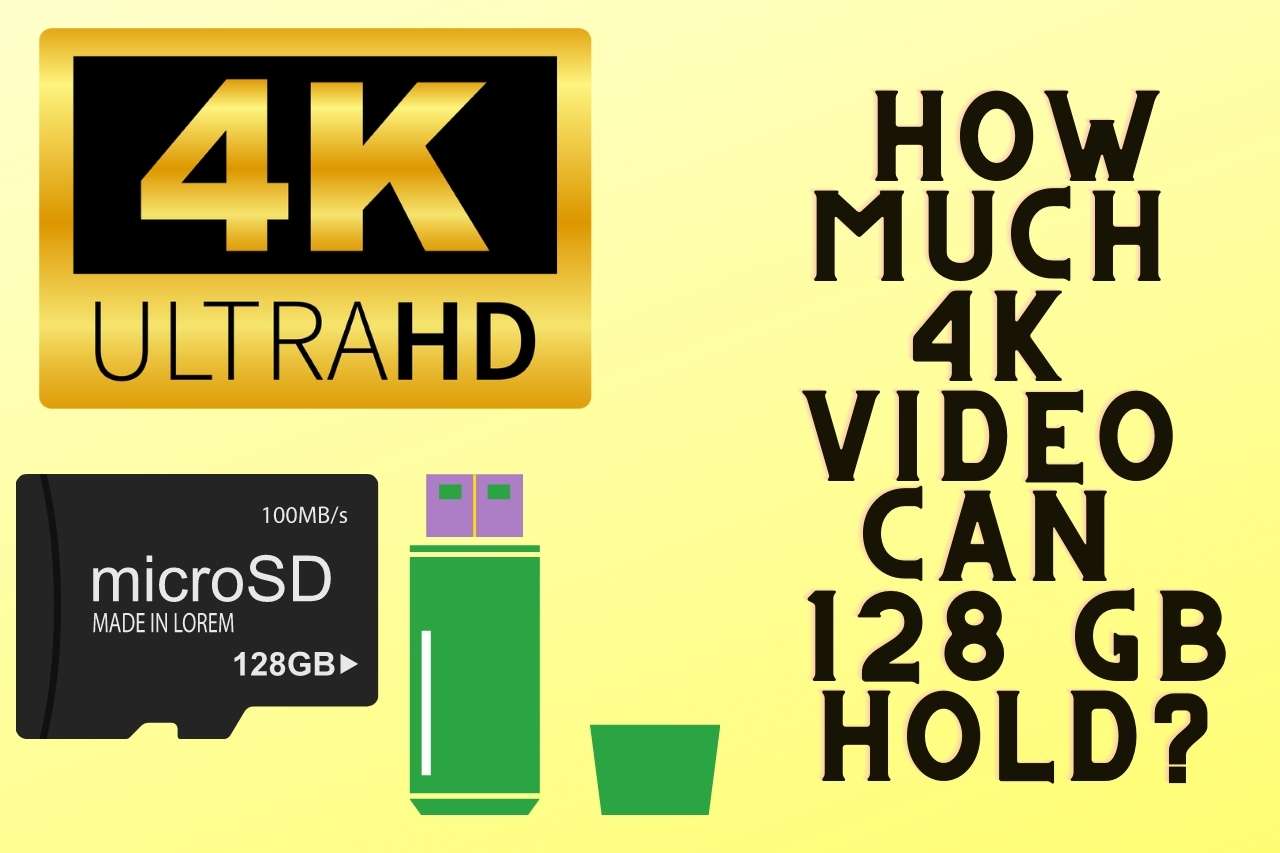4k content is the latest fad in an era of astounding visual clarity and sharpness. Higher-definition video’s long-loved descendant, 4K video, has a startlingly sharp resolution. 4K video consumes a lot of space and is large and heavy. The quality of recorded video of an event is improving to the extent that it matches what our eyes can see. However, it has a price that seems nearly impossible to bear. The most recent digital cameras enable you to capture breathtaking 4K video. But 4K video may also consume a lot of storage capacity on an sd card. Therefore, you must know how much 4k video can 128 GB hold. This guide will discuss how much playtime you could obtain from various Memory card capacities on the marketplace.
Quick Summary: A 128GB card could hold a maximum of five hrs of 4K video, which will be plenty for most users.
Read more to learn how much storage 4k eats up.
In 2022, watching 4K videos won’t be considered novel or avant-garde. There was HD content or 1080p before the immensely incredible 4K resolution, which has evolved to be associated with visual excellence. The pixel sharpness offered by 4k is over four times greater than the prior version. So let’s look at how much 4k video can 128 GB hold. Considering the two, in contrast, you may understand why it drains your Memory card so quickly, even though it is undeniably a very significant expenditure in memory.
How Much 4k Video Can 128 GB Hold? – Everything You Need to Know
Fps, the format the camera utilizes, compressing, and the bit rate all play a role in the amount of 4K your SD card can store. In light of this, it gets predicted that a 128 GB memory could hold 42 to 304 mins of 4K footage. A 128GB Memory card will be sufficient for you, particularly if you don’t want to record several 4K recordings. When choosing a Memory card for their digicam, a person must at the very least keep these considerations in mind.
If you utilize 4K seldom and don’t frequently need videos longer than 30 mins, this size would be helpful to you. If you exceed it, you may occasionally have storage issues or run out of supplies altogether. Additionally, it unintentionally sparks a power tussle within your Memory card over what gets kept and deleted. It might be devastating if you’re trying to capture a fleeting moment or are working under a tight deadline.
The GoPro video quality is typically that. Seventy-six videos randomly fit on a 128 GB sd card, depending on a 4K definition at 60 frames per second. The typical video length in this instance is 3 mins, and the 4k bitrate streaming is also a factor. 100 Mbit/sec gets frequently used in recording equipment with the highest bit rates. 200 Mbit/s has also become available.
256GB SD Card
You are inclined to acquire your investment back with this card because it has around double the amount of storage capacity that 128GB has. Remarkably, for how much 4k video can 128 GB hold, you can still capture over an hour of video, especially at the maximum bit rate of 400 Megabytes per second.
512GB Cards
Most people today couldn’t have predicted that the 64-gigabyte Memory card would become outdated a decade ago, but now we have it. However, 512 GBs ought to be more than plenty for whatever 4K demands one would have.
It contains at least 168 minutes of 4K video. People planning may acquire the larger SD cards to make updates and future purchasing. Investing in a larger Memory card now might spare you money later on when the footage on your camera occupies more storage if you’ve got little additional money.
A massive goal for 4k definition films, and your sights set on the long term. Most of these items are excessive for a person who wants to film only a fraction of an hr of 4K.
What are the Factors that Affect File Size?
Your capture bit rate and the amount of time you wish to capture will primarily determine the memory card size you require. But, there are several variables to think about that affect the bit rate and, ultimately, the capacity of the Memory card you need:
Resolution
Images with a resolution of 3840 by 2160 get recorded in 4K video. Four times as large as a 1080p video picture is each picture in a 4K video. Additionally, 4K requires four times as much data as recording in 1080p if you wish to maintain a similar image resolution and frame rate.
As opposed to 2K, 4K footage requires larger Memory cards. In another sense, the SD-card space needed to capture footage for a specific amount of time at a given level of picture quality depends on the resolution.
Frame Rate
The video recording size grows when the frame rate gets raised—based on the chosen codec, shooting at 120 frames per second results in 120 pictures getting reduced at various rates. Frame frequencies of 24, 30, or 60 fps may be available on digital devices that capture 4K video. A bigger card is required if you intend to film at 60 fps.
Bit Rate
The bit rate is among the most important parameters when determining the size of a video stream. The encoder and compressing technique utilized to assemble the pictures into a video stream often set the bit rate. The pace of recording likewise accelerates with an elevation in frame rate.
Bottom Line
The current format for video quality is 4k, which gets expected to remain in place for a while before losing its throne. Although it is incredible to witness, everything good has some downside, and excellent video resolution is no different. Depending on the memory card’s data storage, you could save one or more 4K videos. 4.5 hrs of 4K videos could fit on 128 GB Memory cards if we’re talking about them.
You May Also Like




